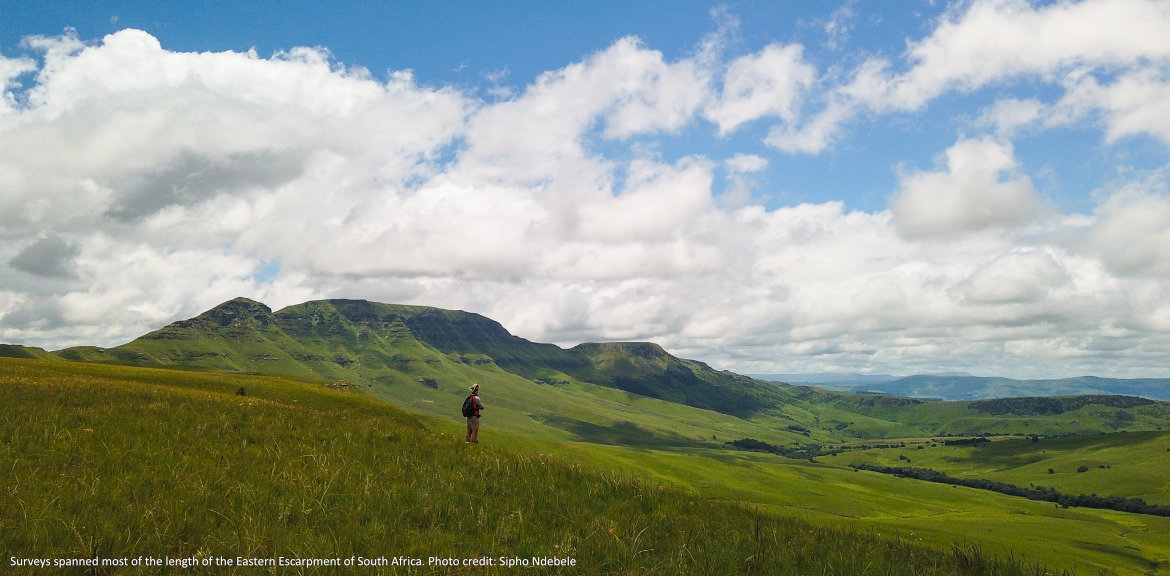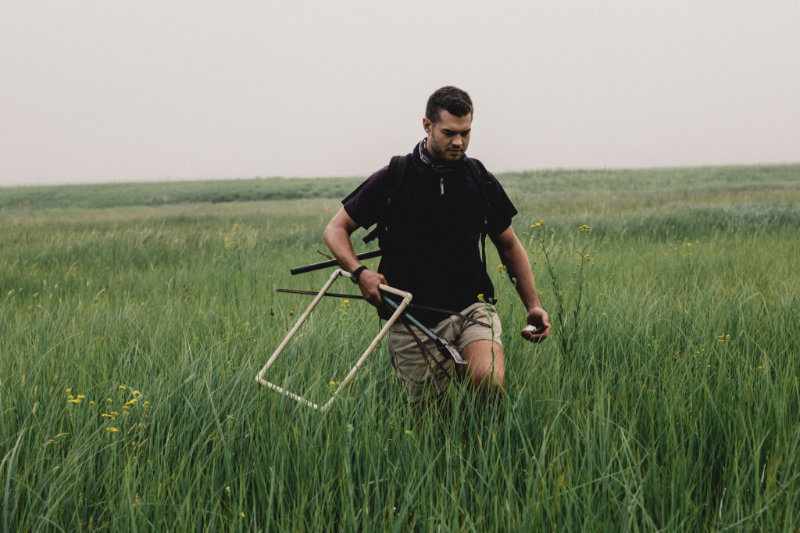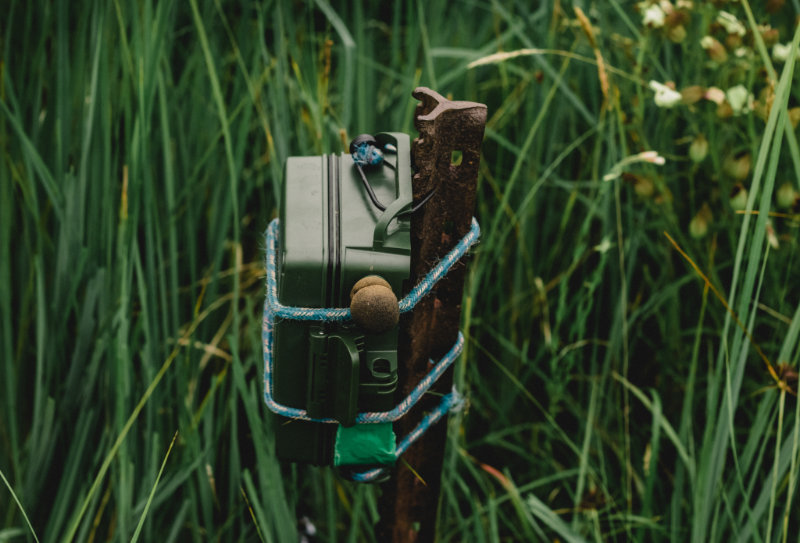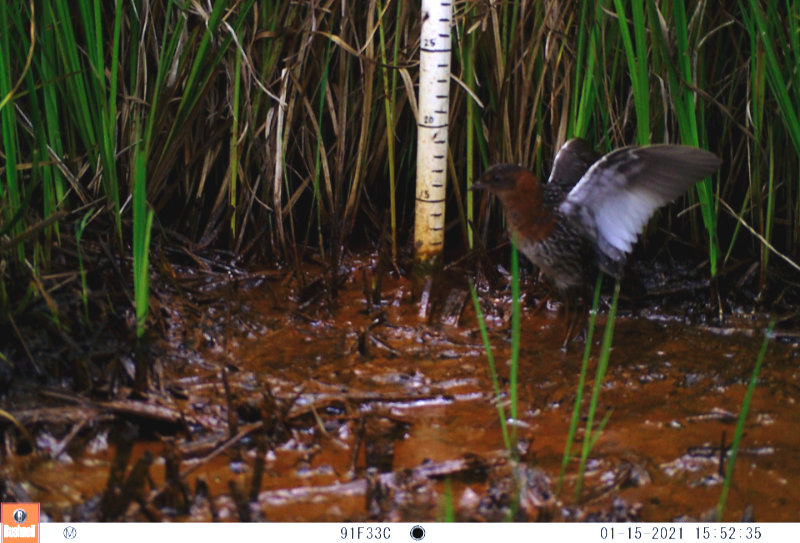
The current distribution of White-winged Flufftail in South Africa is unknown. This knowledge gap is an obstacle to the conservation of this Critically Endangered species. Acoustic surveys were conducted along the Eastern Escarpment of South Africa during the summer of 2020/2021 to determine where White-winged Flufftails still occur.

The Critically Endangered White-winged Flufftail is a habitat specialist that breeds at high-altitude wetlands. The historical distribution of White-winged Flufftail in South Africa once spanned the Eastern Escarpment from the Eastern Cape to Mpumalanga Province. Over the years, inland wetlands have been destroyed and degraded by various human pressures, such as water drainage, erosion and sedimentation, and peat fires. It is unknown whether White-winged Flufftails are still present at sites where they were seen in the past. This is a hindrance to the conservation of the species because we do not know where to focus our efforts and resources. Rockjumper Fellow of White-winged Flufftail Conservation, Dr Kyle Lloyd, conducted surveys along the Eastern Escarpment of South Africa to establish the bird’s current distribution within the country. He explored historical and new sites where the bird has never been seen before on both private and protected land. Sites were selected based on a Habitat Suitability Model, developed by BirdLife South Africa’s Science and Innovation Programme, which predicts where the White-winged Flufftail is likely to occur given the species’ habitat requirements.
Surveys were conducted at 16 wetlands in Mpumalanga, Free State and KwaZulu-Natal Provinces, stretching from Dullstroom in the north to Franklin in the south. Acoustic devices were used to determine if the White-winged Flufftail was present at surveyed wetlands. Acoustic devices provide the best means of detecting the bird given its highly cryptic behaviour and the devices do not interfere with the breeding success of the species. The data that has been collected will be processed over the next months and made available to the White-winged Flufftail National Working Group to aid in prioritising and focussing conservation efforts.


BirdLife South Africa is grateful to the many landowners and provincial conservation governing bodies who assisted with the 2020/21 acoustic surveys. This work would not be possible without the generous financial support of Rockjumper Birding Tours.
Dr Kyle Lloyd
Rockjumper Fellow of White-winged Flufftail Conservation
BirdLife South Africa
Please consider supporting BirdLife and the White-winged Flufftail.
Please note: The target project must be specified when making a donation.
There is no “White-winged Flufftail” option on the donations page so please select “Other (Specify in additional notes)” and specify the White-winged Flufftail Project when prompted.
In addition, BirdLife South Africa can issue 18A tax certificates for donations upon specific request (assistant.bookkeeper@birdlife.org.za).

The Rockjumper Fellow of White-winged Flufftail Conservation
Kyle Lloyd grew up in the Western Cape and KwaZulu-Natal provinces of South Africa, where he developed a passion and love for nature. He studied for his BSc and BSc Honours at Rhodes University where like-minded people soon had him bitten by the birding tick. During the course of his studies, Kyle developed a concern for humanity’s abuse of natural resources and the lack of communication between scientists and practitioners. Kyle pursued his MSc in Conservation Biology at the FitzPatrick Institute of African Ornithology at the University of Cape Town where he was equipped with the tools needed to address environmental concerns. In desperate need of a break from studying, Kyle then grasped the opportunity to spend 13 months at Marion Island, where he collected data about elephant seals, fur seals and killer whales in a sub-Antarctic wilderness. He then completed his PhD on the Population and individual life history consequences of polygyny in male southern elephant seals at the University of Pretoria before starting his career at BirdLife South Africa. ‘I see this position as the perfect marriage of research and public engagement that uses evidence-based strategies to inform management decisions. I feel truly honoured to be a part of this endeavour and am grateful for the support of Rockjumper Birding Tours.’
